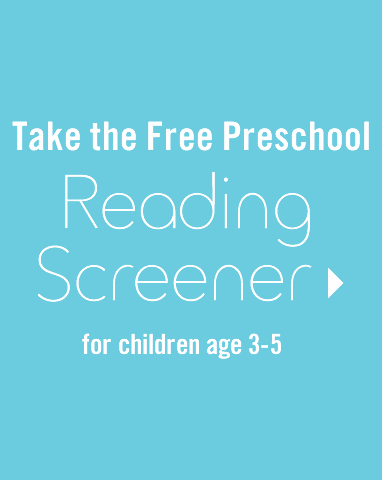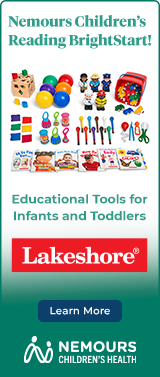Children never tire of being told how much they are loved. This book tells the story of a parent’s powerful love for a child using beautiful and imaginative examples. Beautifully illustrated in settings that are relatable to children, this book will certainly have your child wanting to talk about what he sees in the pictures. In addition to talking about the theme of love, you can use the rhyming text to practice rhyming words, bring attention to new words for vocabulary building or generate ideas for drawing and writing.
Before, During and After Reading
Print Awareness and Oral Language
Ask your child to show you the front and back covers of the book. While looking at the front cover, ask him to touch a word and then touch a picture. Does he know the difference between a word and a picture? Sweep your finger under the words as your read the title, author and illustrator. Have him tell you what he sees in the picture and make a prediction as to what the book may be about.
Phonological Awareness
Explain to your child that this is a rhyming book and that you both can listen for words that sound the same at the end, words that rhyme. For fun, add a motion to the words. For example:
- I heard two words that sound the same at the end. They rhyme. Listen: skies/butterflies. Say it with me: skies/butterflies Each time I say skies, raise your arms up to the sky. Each time I say butterflies, flap your arms like you can fly. Skies . . . butterflies . . . skies . . . . butterflies.
- Store/roar Do they rhyme? Yes they do all the time! Say them with me: store/roar, store/roar. Now I’ll say store (point to yourself) and you say roar (point to your child). Store (point to yourself), (point to him) ____, store (point to self), (point to him)_____. Let me hear you roar!
- Listen: zoo (scratch self and say ooh, ooh like a monkey in the zoo), BOO (start with your hands in a fist and spread your fingers as you say boo). Zoo/boo They sound the same, they rhyme. Say them with me: Zoo (ooh, ooh, ooh); BOO (fist, spread fingers). Zoo (ooh, ooh, ooh); BOO (fist, spread fingers). Can you think of another word that rhymes with zoo and boo?
Oral Language
Build vocabulary. During the story ask what your child thinks the author was trying to say and if possible, relate to a previous experience. For example:
- Listen: ocean’s roar. What do you think the author meant when she wrote ocean’s roar? Can you remember how the waves sounded when we went to the beach?
Here are some other examples you might try:
- puppies that romp
- chills and thrills
- pleasure of a visit
- excitement of being quiet
- fun under the hose
- a fresh snow
- trees are all ablaze
Phonological Awareness
Play word games that practice elision. Elision is omitting a sound or sounds from a word and then saying what is left. For example, you might say:
Let’s play a word game. Can you say the word rainbow? Listen as I say it slowly. rain…bow. Can you say it slowly?
Let’s see if you can figure this out. Listen, rain…bow. If I take rain away from the word rainbow, what word do I have left? That’s right, bow, because rainbow without rain is just bow. You figured it out, you’re awesome!
Use other compound words from the story to practice. For example:
- butterfly
- snowball
- springtime
- raindrop
Beginning Writing
Encourage your child to draw about somewhere he has been, something or someone he loves, or something he would like to do. Watch and talk to him as he draws. Ask questions to add details to his work or comment on what you see him doing. When he is finished drawing, let him tell you about his work. Display for all to see and let him tell others about what he did.
Explore more easy at-home activities designed to build pre-reading skills in your four-year-old, or or take the Reading BrightStart! Preschool Reading Screener. The screener can help you determine if your child is on the path to reading readiness, and provides a free plan for moving forward.








